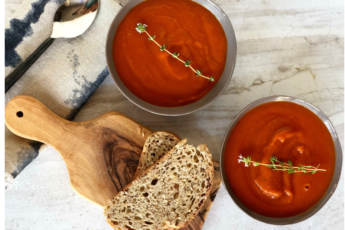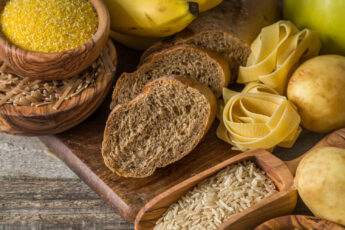You constantly hear: “We eat too many processed foods.” Recommendations by everyone from credible experts to celebrities and other less-than-credible “influencers” talk about the need to cut back on “processed foods”.
If popular media demonized processed foods, there’s an implication that ultra-processed foods, or UPFs, must be worse. Think candy, soda, the empty-calorie stuff with little or no nutritional value other than calories.
Would you call flavored Greek yogurt and sliced whole grain bread “ULTRA-processed”? They are, according to one classification system. Confused? Read on.
A study done for the British Nutrition Foundation, detailed here, found that, on one hand, consumers were definite about not wanting to eat fewer UPFs. On the other, there were confused about what foods were considered UPFs.
One Reason For Confusion: UPFs have no formal definition.
Processing food, per se, has been going on for thousands of years. Any food that’s been peeled, diced, canned, dried, frozen, fermented, heated or combined with other foods and ingredients has been “processed.”
So, What Makes Processed Food “Ultra-”?
That happened when a group of academicians at Brazil’s University of Sao Paulo, decided to define UPFs in a way that made sense to them, if not many scientists. They called it the “NOVA” classification, and it’s become widely applied, even endorsed by the World Health Organization (WHO), creating an air of legitimacy.
But NOVA has never been scientifically validated. That’s a problem, because the NOVA system has a lot of inconsistencies in how it distinguishes “processed” and “ultra-processed” foods, and a lot of them don’t seem to make common sense. I’ve boiled it all down in people-speak here, and the NOVA reference list of foods is here.
The NOVA system seems to include a heavy dose of philosophy instead of science: Foods produced “industrially” can make them UPFs, independent of their nutritional content. An example:
Sliced whole-wheat bread from a supermarket is “ultra-processed.” A loaf of WHITE bread from a bakery is merely “processed.”

Photo: Pixabay
Are soda, candy, & flavored Greek yogurt both UPFs? Sadly, the NOVA system says they are.
Common sense however, says sliced, whole-grain bread from the supermarket and flavored Greek yogurt do not belong in the same nutritional category as sugary soda.
Clearly, the NOVA system does nothing to help consumers make better decisions about what foods to buy and serve their families.
Why hasn’t NOVA been scientifically validated?
Any answer is only speculative. It appears to be strongly infused with the philosophy of the developers. That’s becomes a problem with scientific validation: it’s hard to validate philosophy. Or maybe the developers are concerned the results wouldn’t be as desirable as they’d hoped.
Case in point: When a recent study of type 2 diabetics broke out the NOVA-classified UPFs into “subgroups” that included foods like whole-grain bread and yogurt it found that higher consumption of these nutritious “UPFs” was associated with LOWER risk of type 2 diabetes.
Cut-To-The-Chase Takeaway:
Some common sense helps sort out the UPF confusion. Stick with what a wide body of credible science has demonstrated:
- Eat plenty of a wide variety of fruits and vegetables. Every day. Fresh, frozen, canned, dried — they’re all OK.
- Favor lean protein foods whenever possible: lean meat and fish (fatty fish like salmon & sardines are an exception here!).
- Dairy foods? Yes: low-fat & fat-free milk & yogurt. Cheese? Modestly. (I’m not giving it up!)
- Go for whole-grain breads and cereals whenever you have a choice.
- Special push for beans & legumes — undereaten and underappreciated! Canned or cooked from dried form, they’re true superfoods.
- Move. There’s no substitute for the benefits of DAILY physical activity. Do what you enjoy and what you can.
Featured photo: Pixabay







